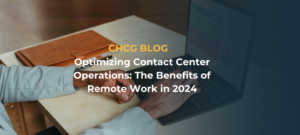Gamification – What is it and is it something we can leverage at work for our employees or customers?
Recently, I completed a course allowing me to become certified in Gamification. When I told colleagues I was becoming certified in gamification; I was universally asked: “What is that?”
So I’m addressing it in a couple of blogs for you.
In its simplest definition it is using game-like elements and game design in a non-game context to engage users and to solve problems. Gamification leverages game design, loyalty program design and behavioral economics to create the optimal context for behavior change and successful outcomes, typically as an online marketing technique to encourage engagement with a product or service.
Well…. that was clear as mud.
There has been a long history of using fun and play to motivate people and make work seem more enjoyable. Most remember Mary Poppins and the song “A Spoonful of Sugar”
In every job that must be done there is an element of fun; you find the fun and snap! The job’s a game
However, the term gamification has only been a recent addition to our vocabulary. The idea behind the use of playfulness in software is that rather than making interfaces simply usable, they could also be fun to use as well, producing positive emotions and feelings through things such as sound, graphics, challenge etc., thus enhancing the experience the user has with the software.
Gamification can be used in several ways:
- Externally to increase marketing, sales or customer engagement
- Internally for productivity enhancements, HR, crowdsourcing
- Behavior change to improve health/wellness, personal finance, sustainability
On the gamification bandwagon? Yeah, but it’s not as simple as throwing something out there and inviting people to play. It’s a process.
Let’s look at a simple example that outlines why gamification may be beneficial to increasing market share.
Premise:
Cereals Inc. wants to increase market share in ready-to-eat pastries, especially in the 18-35 age group.
Solution:
In order to increase the market share of Cereals Inc. ready-to-eat pastries, the organization should look at gamification as one strategy to expand market share for the demographics desired (18-35 male/female).
If our customers are unaware of our products, they cannot purchase our pastries. By using gamification, we will be able to drive potential purchasers to our websites. Statistics have shown that this age group wants to have fun, be engaged and entertained. Gamification achieves that.
So why use gamification?
- Drives motivation: Customer motivation is increased through the use of social and game-like techniques that will keep the 18 – 35 market coming back to visit time and time again. The more our customers are aware of our pastries, the more likely they are to purchase.
- Increase customer engagement: If done correctly, gamification is FUN – and fun is what this demographic is all about. By using fun to keep product awareness of this age group high, we will easily expand market share.
- Real-time data: Since gamification is essentially statistical driven – with data easily able to be mined and analyzed – the success or failure is quickly quantifiable. This will give us real-time data that will allow us to make quick and effective changes to the markets as needed.
- Customer social media: With the use of gamification, Cereals Inc. can easily create a little competition among the users through the use of social media and leaderboards. This will increase use of our site through the interactions of the users. Because we’ve made it fun and competitive – our customers will bring more users to the websites and ultimately more purchasers of the product.
Using a gamification strategy allows us to make an emotional connection with the audience and lead to a longer, stronger relationship as opposed to simple brand awareness.
Gamification opens the door to a new strategy that many organizations have overlooked. It can be use both inter
Berni Hollinger helps companies solve problems through Leadership Training, Interim Leadership consulting and Restructuring. As a professional Training Instructor and CFO / Controller, she sees things differently. As a highly experienced CFO, Controller, Accountant, and Financial Consultant, she has led financial departments for Fortune 100 companies increasing bottom line growth and compassionately leading and training employees and restructuring processes to maximize profitability in the publishing, printing, subscriptions / fulfillment, manufacturing and transportation sectors. She is a Professional Quilter, and Quilting Instructor, creating lasting memories through exclusive designs of one-of-a-kind memory quilts.




